mobile View, to the German Version tap the flag


- parliamentariy monarchy with the British monarch as Head of State
- own name: Commonwealth of the Bahamas
• Flags
• Historical Flags
• Meaning/Origin of the Flag
• Coat of Arms
• Meaning/Origin of the Coat of Arms
• Aircraft Roundel
• Map
• Numbers and Facts
• History
• Origin of the Country's Name
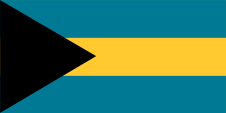
National flag,
ratio = 1:2,
Source, by: Wikipedia (D)





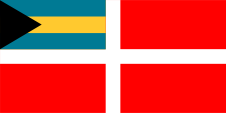
Merchant flag,
ratio = 1:2,
Source, by: Wikipedia (D),
Flaggen und Wappen



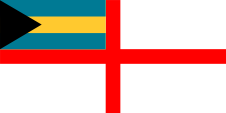
Naval flag,
ratio = 1:2,
Source, by: Wikipedia (D),
Flaggen und Wappen



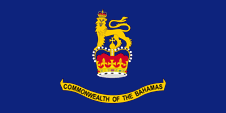
Flag of the Governor General,
ratio = 1:2,
Source, by: Flags of the World




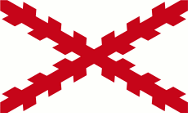
16th century,
The Bahamas belong to Spain,
Source, by: Flags of the World



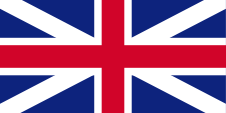
1670–1801,
Flag of United Kingdom (to 1707 of England)
ratio = 1:2,
Source, by: Die Welt der Flaggen






1801–1869,
Flag of the United Kingdom
ratio = 1:2,
Source, by: World Statesmen






1869–1904,
Flag of the government (state flag)
ratio = 1:2,
Source, by: malarz pl, CC BY-SA 3.0, via Wikimedia Commons, by: Wikipedia (D)



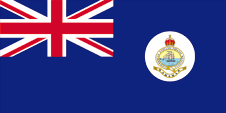
1904–1923,
Flag of the government (state flag),
ratio = 1:2,
Source, by:
malarz pl, CC BY-SA 3.0, via Wikimedia Commons, by: Wikipedia (D)



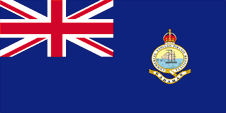
1923–1953,
Flag of the government (state flag),
ratio = 1:2,
Source, by:
NikNaks talk - gallery - wikipedia, CC BY-SA 3.0, via Wikimedia Commons, by: Wikipedia (D)



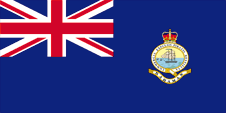
1953–1964,
Flag of the government (state flag),
ratio = 1:2,
Source, by: NikNaks - gallery - wikipedia, CC BY-SA 3.0, via Wikimedia Commons, by: Wikipedia (D)



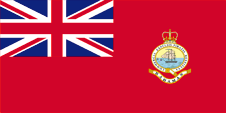
1953–1964,
Merchant flag,
ratio = 1:2,
Source, by: NikNaks - gallery - wikipedia, CC BY-SA 3.0, via Wikimedia Commons, by: Flags of the World



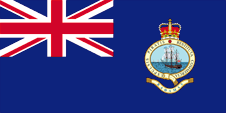
1964–1973,
Flag of the government (state flag),
ratio = 1:2,
Source, by: Tcfc2349, CC BY-SA 4.0, via Wikimedia Commons, by: Wikipedia (D)



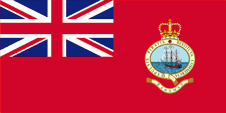
1964–1973,
Merchant flag,
ratio = 1:2,
Source, by: Tcfc2349, CC BY-SA 4.0, via Wikimedia Commons, by: Flags of the World



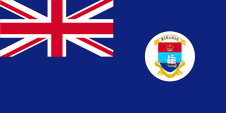
1964–1973,
Ceremonial state flag, "Constitution Flag",
ratio = 1:2,
Source, by: Flags of the World



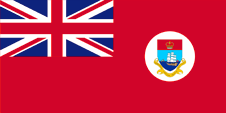
1964–1973,
Ceremonial state flag, "Constitution Flag", Red Ensign Version,
ratio = 1:2,
Source, by: Flags of the World



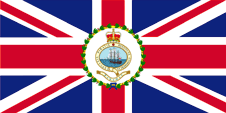
1964–1973,
Flag of the Governor,
ratio = 1:2,
Source, by: Flags of the World




The Bahamas are orientated in the British Ensign-System. This points to the connexions to the United Kingdom. The United Kingdom introduced a flag system in 1864 in which:
• war ships fly the "White Ensign" (naval flag), a white flag often with an uninterrupted red St. George's-Cross and with the Union Jack in the upper staff quadrant of the flag,
• merchant ships fly a "Red Ensign" (also named "Civil Ensign" => civil flag, the real merchant flag), a red flag with the Union Jack in the upper staff quadrant of the flag, and
• governmental ships fly the "Blue Ensign" (flag for the use by the gouvernment => the actual state flag), a blue flag with the Union Jack in the upper staff quadrant of the flag.
Since 1865 ships of colonial governments were permitted to fly the Blue Ensign with a badge in the flying end of the flag. The respective governments were asked to design appropriate badges. Merchant ships and seafaring persons from colonies were only permitted to use the Red Ensign with a badge, then also named Civil Ensign, if permission has been given to the respective colony by the British admiralty. Such a permission was never given to the Bahams. Nevertheless, in the 1930s, private individuals startet a considerable and extented use of red merchant flags with the badge, instead of the plain red merchant flag (so-called Red Ensign). The British Colonial Office complained about this practice but did not take action against. Even the in 1959 introduced coat of arms was used on such Red Ensigns and also the coat of arms version from 1964. After all, knowing that this activity was illegal, the banner with the country name above the coat of arms was dispensed with. The 1869 badge was used on Red Ensigns until the independence in 1974.
Such a badge was often a regional landscape representation placed on a disk, often showing ships, historical events or even a kind of a logo. Very often, a badge also showed the name of the country or a motto. Some British possessions, however, already had a coat of arms from the beginning, or their badge was replaced by a coat of arms over the years. To ensure a uniform appearance in the flying end of the flags, coats of arms and other symbols were displayed on a white disk in the size of the earlier badges. There were also exceptions, because some colonies did not use the white disk and placed their escutcheon or even coat of arms directly on the bunting, sometimes enlarged. Already in the '40s they started to remove the white disk and placed the coat of arms directly or enlarged. This conversion process was done gradually, nowhere at the same time and completely. In some British possessions, flags with the white disc are still in use, in others no more and in some areas are both variants in use, next to each other.
The badge of the Bahamas was approved in 1869 and maintained almost unchanged until 1973. It shows a British warship on the high seas, chasing two pirate ships, surrounded by a garter belt with the explanatory slogan: "Expulsis Piratis Commercia Restituta" (english: "Pirates Expelled Commerce Restored"), above the British crown, below a banner with the name of the country. It was placed in the flying end of the blue state flag, a so-called Blue Ensign, on a white disk. Over the years in 1904 and 1953, the shape of the crown changed and from 1923 the white disc was dispensed with and the badge was at least partially enlarged. In 1959 a coat of arms was introduced for the Bahamas. It showed the maritime scene of the badge on its shield, the head of the shield was blue and showed the British crown in the middle. However, the coat of arms was not officially transferred to the state flag. In 1964 the coat of arms was changed a little bit on the occasion of the country's autonomy. The head of the shield was now colored red and a golden banner with the slogan of Badge was added below the shield. Another banner appeared above the shield with the name of the country in the middle. This coat of arms was officially transferred to a variant of the blue national flag and shown on a white disk in the flying end of the flag. The flag was apparently called the "Constitution Flag" and was only shown on public occasions as a ceremonial flag. The badge from 1869 remained in use on the usual state flags.
The today's flag was officially hoisted on the 10th of July in 1973. It won in a contest. The black triangle on the staff side symbolizes the unity of the people. The yellow (golden) centre-stripe stands for the sandy beaches of the islands, the blue stripes stands for the waters, the Bahamas are situated. In a somewhat prosaic sentence the flag could be interpreted as follows, too: "The black symbolizes the power and might of the united people, the wedge the decision of the people of the Bahamas to use the abundant resources of the earth (yellow) and the seas (blue)." The Bahamas use today a Red Ensign with an uninterrupted white cross as merchant flag, and a White Ensign with an uninterrupted red cross as naval flag. Allegedly a Blue Ensign is also used as state flag.
Source: Die Welt der Flaggen, Flaggen Wappen Hymnen, Flaggen und Wappen der Welt
*Source: Flaggen und Wappen der Welt, Translator (partial) of the English text: Joachim Nuthack

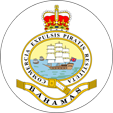
1869–1973,
Badge of the Bahamas,
Source, by: NikNaks - gallery - wikipedia, CC BY-SA 3.0, via Wikimedia Commons, by: Das Flaggenbuch

1959–1963,
Coat of arms of the Bahamas,
Source, by:
Flags of the World

1963–1971,
Coat of arms of the Bahamas,
Source, by:
Flags of the World

since 1971,
Coat of arms of the Bahamas,
Source, by: Corel Draw 4, The Observers Book of Flags

The badge of the Bahamas was approved in 1869 and maintained almost unchanged until 1973. It shows a British warship on the high seas, chasing two pirate ships, surrounded by a garter belt with the explanatory slogan: "Expulsis Piratis Commercia Restituta" (english: "Pirates Expelled Commerce Restored"), above the British crown, below a banner with the name of the country. Over the years in 1904 and 1953, the shape of the crown changed. In 1959 a coat of arms was introduced for the Bahamas. It showed the maritime scene of the badge on its shield, the head of the shield was blue and showed the British crown in the middle. In 1964 the coat of arms was changed a little bit on the occasion of the country's autonomy. The head of the shield was now colored red and a golden banner with the slogan of Badge was added below the shield. Another banner appeared above the shield with the name of the country in the middle. Queen Elisabeth II awarded the today’s coat of arms on the 7th of December in 1971. It was created by Hervis Bain and Harold A. Munnings, and it shows on silvery ground the ship of Columbus, the "Santa Maria", amid blue and silvery waves. The blue head of the shield shows a rising golden sun. The shield carrys a king's helmet with blue and golden blankets, on a golden-blue torus, with a bundle of palm tree leaves behind. Shield-holders are a swordfish and a flamingo. On the pedestal, formed by ocean waves and grass ground (wet gall), on a typeface-banner the motto: "Forward, upward, onward together". This slogan, created by two eleven-year old pupils, won in a contest.
Source: Die Welt der Flaggen,
Flaggen und Wappen,
Flaggen und Wappen der Welt,
Flags of the World


Aircraft Roundel of the Bahamas,
Source, by: Wikipedia (EN)

Location:
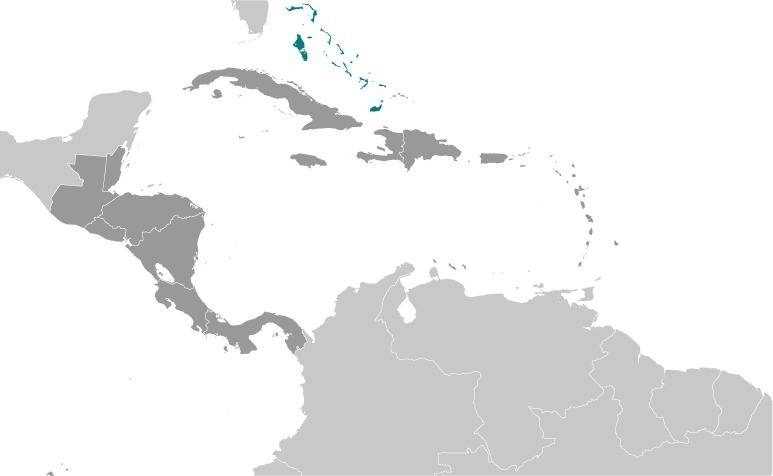
Source: CIA World Factbook
Map of the country:
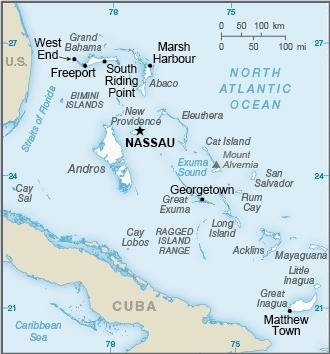
Source: CIA World Factbook

Area: 5.381 square miles, thereof Andros 2.300 sq.mi., Great and Little Abaco 649 sq.mi., Great Bahama 530 sq.mi.
Inhabitants: 353.658 (2010), thereof 85% of African descent, 12% Europeans
Religions: 14% Roman Catholic, 68% Protestant
Density of Population: 66 inh./sq.mi.
Capital: Nassau, 248.948 inh. (2010)
official Language: English
other Languages: Haitian Creole, Spanish
Currency: 1 Bahama-Dollar (BSD, $, B$) = 100 Cents
Time Zone: GMT – 5 h
Source: Wikipedia (D)

1492 · the archipelago is discovered by Columbus, in the following years the islands are economically exploited by Spain for a short time, after the death or enslavement of all indigenous people, the islands become meaningless for Spain
1565 · unsuccessful attempt of colonization by France
1578 · the islands are, pro forma, transferred from the Kingdom of England as a fiefdom to Sir Humphrey Gilbert, no colonization
1629 · The islands are, pro forma, transferred from the Kingdom of England as a fiefdom to Sir Robert Heath, no colonization
1633 · some of the islands are, pro forma, transferred to Guillaume de Caën by the Kingdom of France, no colonization
1647 · first founding of an English colony
1656 · founding of Charlestown (later Nassau, named after King Charles II. of England) on the island of New Providence
1670 · England takes possession of the archipelago
1682–1684 · official anti-piracy attacks by Spain and France on New Providence Island, destruction of Charlestown
1684–1686 · the islands are officially abandoned by all Europeans
1687 · founding of Nassau by the English on the ruins of Charlestown (Nassau is named after William III. of Orange-Nassau, governor of the Netherlands, also King of England, Scotland and Ireland.)
1695 · official anti-piracy attacks by Spain on the island of New Providence, destruction of Nassau
1697 · Reconstruction of Nassau by pirates
1703 · Spanish and French attacks against piracy on the island of New Providence, destruction of Nassau, which the pirates quickly rebuild
1706–1718 · the entire archipelago is controlled by pirates
1717 · the former pirate Woodes Rogers is appointed Governor of the Bahamas by the British Crown and is given the task of driving out the pirates, which was achieved in 1718, the United Kingdom controls the entire archipelago
1728 · establishment of a first parliamentary government for the Bahamas with seat in Nassau
1776 · troops of the continental army of the later USA occupy Nassau for a short time
1783 · end of the War of Independence in the USA, thousands of loyal supporters of the British Crown flee from persecution to the islands, the Bahamas become a British crown colony
1838 · prohibition of slavery, economic decline
1841 · United Kingdom grants limited internal self-government
1861–1865 · American Civil War, Nassau is a naval base of the Confederate States of America
1964 · introduction of a constitution, full self-government (autonomy)
10th of July in 1973 · Independence
Source: 1.)Wikipedia (D),
2.)Wikipedia (D),
World Statesmen,
Länder der Erde

The name of the country goes back to the island "Grand Bahama", which was discovered by Spanish sailors in 1492 and this name has been transferred to the entire archipelago over time. The Spanish called the island "Gran Bajamar". That is to translate as "great shoals". This threat to seafaring, along with declining economic interests, was one of the reasons why the islands were no longer colonized by Spain. Pirates knew how to use the shallows to their own advantage, namely as a hideout and a pirate's nest. Between 1706 and 1718 the pirates were even the unrestricted rulers of the archipelago. They were it, who dragged the name of the archipelago down to the term "Bahamas", which is still common today. Until the 17th century the Europeans called the islands "Islas Lucayos" after the "Lucayans", the indigenous people who lived here until their extinction in the 16th century.
Source: Wikipedia (D)


![]()





























































